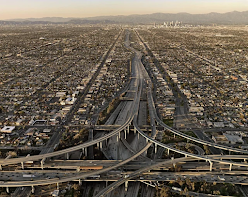Humans & Nature
I have spent the majority of my life so far living in suburban settings of various densities and have only experienced briefly living in a truly dense urban/city center setting when I studied abroad in Genoa. It is clear that there is a wide spectrum of suburban and urban settings with various pros and cons and can both have successful and unsuccessful examples. I think it is important to note that the world is extremely complex and every place is different and thus there is not a single solution that works everywhere. I distinctly remember coming to a more clear understanding of the negative impacts of suburban sprawl when Prof. Dan Harding gave us a lecture in Production and Assemblies where he discussed the growth of Bozeman, Montana and his efforts to promote denser development in the historical/already existing residential zones to try and preserve the beautiful Gallatin Valley. This effort struct a cord with me because (like most people) I have a deep appreciation for natural and rural environments while also appreciating certain aspects of urban life as well.
Based on my understanding, suburban sprawl is the swallowing up and bulldozing of natural or rural places as new “cookie cutter” neighborhoods continuously push outwards from the city or town centers so the same few companies can make their shareholders happy and claim they are helping people achieve the "American dream" of homeownership. Once complete they leave with their money and that new neighborhood quickly becomes encircled by “stroads”, Walmart, gas stations, and cooperate business parks where it is then left stuck in strange semi urban realm. This development pattern continuously pulls infrastructure outwards in an inefficient and unsustainable manner which raises taxes for everyone. Additionally, littering that land with purely cookie cutter homes erases the land’s infinite potential for other uses or its potential to simply remain as it is. I have experienced these types of places first hand where you feel completely isolated from people and places due to physical barriers like highways, roads, parking lots, or retention ponds.
In addition, suburban sprawl disconnects the urban core from its natural “hinterland”. In the US, this phenomenon is a major contributing factor for the urban/rural divide that exists. As the rural places are pushed further from the city cores by an ever growing buffer zone of suburbia, the two extremes have a more difficult time understanding and empathizing with each others viewpoints and ways of life. Those who occupy the truly urban and the truly rural areas have to travel through vast areas of suburbia to now reach one another. Those in suburbia do not receive the benefits of being in a connected walkable urban place nor a truly tranquil place with a closer connection to the land and the traditional ways of living.
I do not think it is realistic to say that we are going to completely undo all the bad development patterns. I do believe that as people become more aware of these issues however laws and regulations can change. I am optimistic we can advocate and discovers solutions that limit suburban sprawl by protecting and preserving undeveloped areas, allowing for greater density to infill areas of low density that exist in the suburban buffer, and allowing nature to reclaim areas within urban or semi urban areas to restore a balance between humans and nature.







Comments
Post a Comment